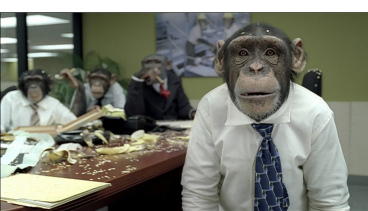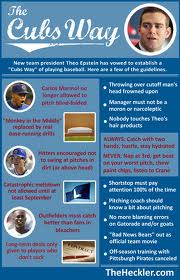 It is a basic truism for some organizational development professionals that “Culture trumps strategy“. In the last few months, this expression has been front and center in my mind. I guess the reason it bothers me is because of its implications, which is none of what I bring to the table as a non-profit and fundraising consultant matters unless the organization’s culture is ready to receive it and act upon it.
It is a basic truism for some organizational development professionals that “Culture trumps strategy“. In the last few months, this expression has been front and center in my mind. I guess the reason it bothers me is because of its implications, which is none of what I bring to the table as a non-profit and fundraising consultant matters unless the organization’s culture is ready to receive it and act upon it.
If the organization’s culture isn’t open to the change they wish to make, then the first order of business needs to be how to evolve culture in such a way that helps people embrace the impending strategies that will emanate from the desired initiative or plan.
So, does culture really trump strategy or that just a bunch of hooey? When I struggle with things, I usually Google it. So It did. And this is what I found:
- Forbes: Culture vs. Strategy – What’s More Important
- Harvard Business Review: Culture Trumps Strategy, Every Time
- Switch & Shift: Why Culture Doesn’t Trump Strategy
Confusing? I know. But I really liked what Mike Myatt said on May 29, 2012 in his article appearing in Forbes titled “Culture vs. Strategy – What’s More Important?”
“Put simply, a corporation’s strategy that ignores, or only pays lip service to culture, will be the beneficiary of the toxic environment they deserve.”
I also liked what what I read in the Switch & Shift article when it comes to synergy between many organizational forces:
“Culture, strategy, leadership, branding, innovation, customer orientation and employee centricity must co-exist.”
I think I like this last quotation because it provides me with an idea of how organizational culture can be changed. In other words, you need to work intentionally with all of these organizational threads to weave your organization’s tapestry we call “organizational culture“. I think this idea is best fleshed out in Steve Denning’s Forbes article titled “How Do You Change An Organizational Culture“.
 I’ll stop Googling now. Because I think I get it now.
I’ll stop Googling now. Because I think I get it now.
If your non-profit organization wants to raise money by implementing private sector philanthropy strategies, then you better have a “Culture of Philanthropy” in place first. If you don’t, then there will be a ton of resistance from every corner of your organization.
Sorry for such an egg-headed post today. I’m obviously struggling with something in my professional life and it spilled out into the blog this morning.
Do you have a good handle on your non-profit organization’s:
- culture
- leadership
- strategies
- employees
- donors
- clients
- brand
If so, how do you know that you do? And more importantly, how are you aligning all of these things as your organization’s leader?
Here’s to your health!
Erik Anderson
Founder & President, The Healthy Non-Profit LLC
www.thehealthynonprofit.com
erik@thehealthynonprofit.com
http://twitter.com/#!/eanderson847
http://www.facebook.com/eanderson847
http://www.linkedin.com/in/erikanderson847

 One particularly hungry monkey eagerly scampered up the pole, intent on retrieving a banana. Just as he reached out to grasp the banana, he was hit with a torrent of cold water from an overhead shower. With a squeal, the monkey abandoned its quest and retreated down the pole.
One particularly hungry monkey eagerly scampered up the pole, intent on retrieving a banana. Just as he reached out to grasp the banana, he was hit with a torrent of cold water from an overhead shower. With a squeal, the monkey abandoned its quest and retreated down the pole.  We, like our monkey friends, become conditioned. Don’t climb that pole! we learn, when we see what happens to those that do … Then we teach don’t climb that pole! to the newcomers we welcome into the organization, telling the story of what happened to our ambitious co-worker Moe when he climbed that pole it was like a cold shower stopped him right in his tracks! … We learn that we don’t need to climb the pole; we are growing sales and driving profits without climbing the pole; it over time becomes an afterthought, except of course to orient the new talent; and there comes a time when a newbie asks“Why don’t we climb the pole?”and we’re all kind of stumped “dunno; it’s just the way we do things around here!”
We, like our monkey friends, become conditioned. Don’t climb that pole! we learn, when we see what happens to those that do … Then we teach don’t climb that pole! to the newcomers we welcome into the organization, telling the story of what happened to our ambitious co-worker Moe when he climbed that pole it was like a cold shower stopped him right in his tracks! … We learn that we don’t need to climb the pole; we are growing sales and driving profits without climbing the pole; it over time becomes an afterthought, except of course to orient the new talent; and there comes a time when a newbie asks“Why don’t we climb the pole?”and we’re all kind of stumped “dunno; it’s just the way we do things around here!”


